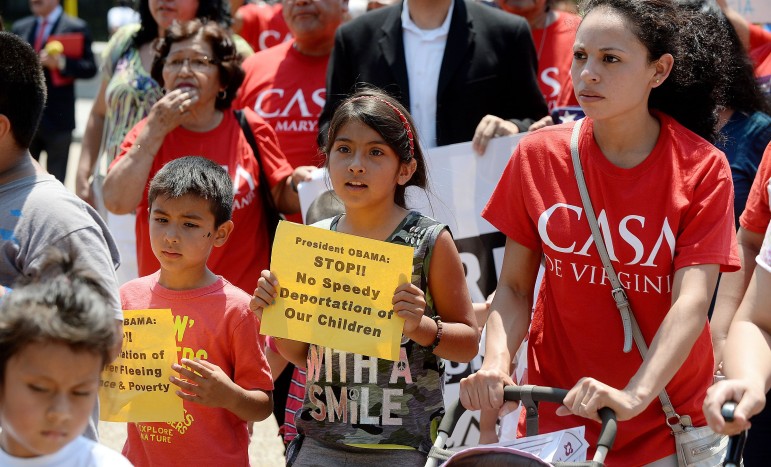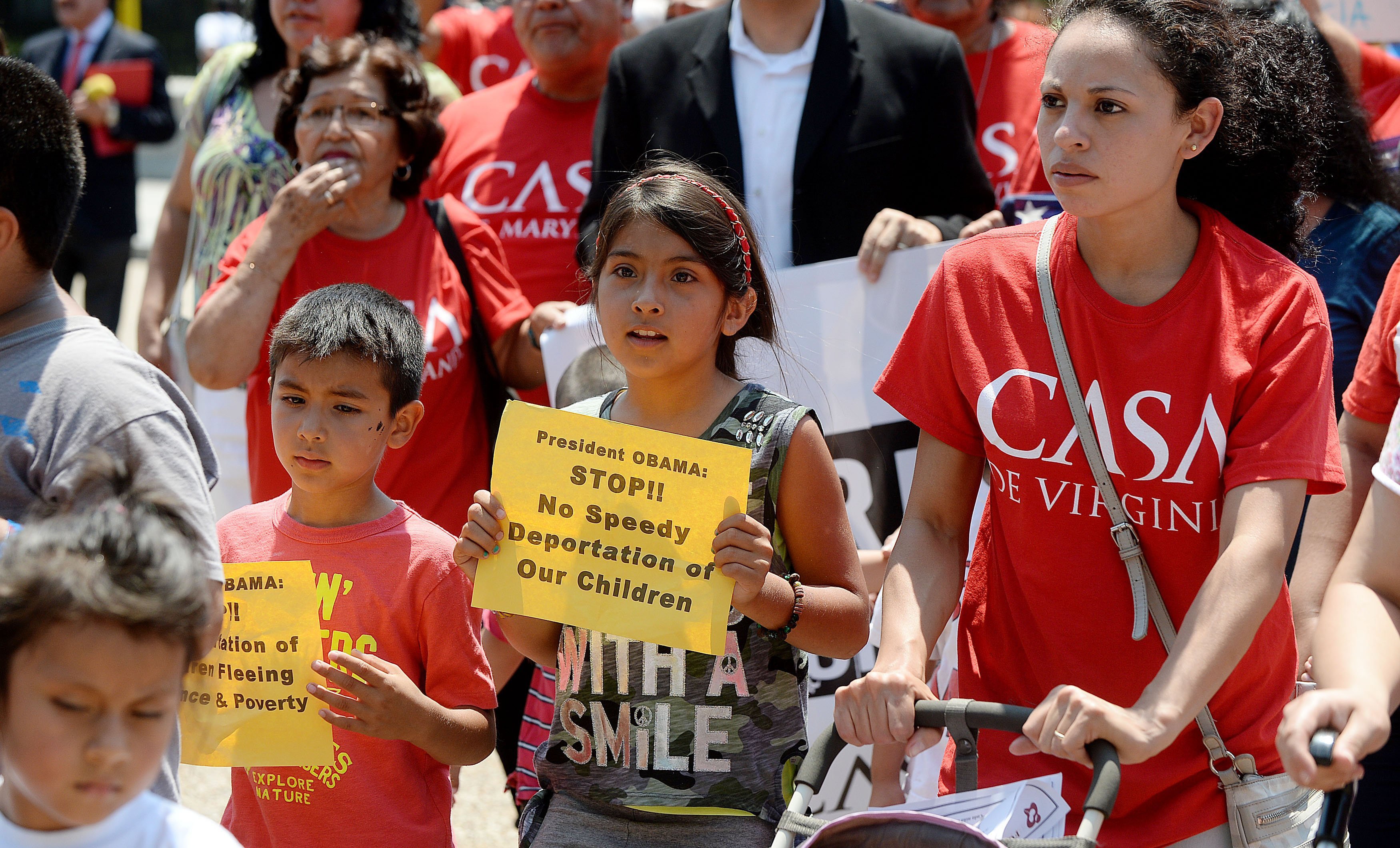
Olivier Douliery / Abaca Press/MCT
Activists protest against deportation that leads to separation of families, Monday, July 7, 2014, in front of the White House in Washington.
The surge of unaccompanied youth crossing from Mexico into the United States has become a political issue, with the White House facing pressure to expedite the return of kids to their home countries.
As President Obama visits Texas this week, he is urging Congress to add immigration judges and detention facilities to speed up the legal process required by law.
Child welfare and immigrants’ rights groups fear the legal process could be fast-tracked and warn that many of the youth face violence at home and need a full review of their situation.
“[Many] have fled violence, insecurity and instability in their home country,” said Katharina Obser, senior associate at Human Rights First.
On July 9, a coalition of rights groups filed a lawsuit in Seattle on behalf of eight kids ranging from age 10 to 17, saying they needed legal representation.
More than 50,000 youth traveling without adults have crossed the border since October, more than twice as many as in all of 2013. They are coming from Guatemala, El Salvador, Honduras and Mexico.
Youth and adults from the three Central American countries are also seeking entry into neighboring countries.
Panama, Nicaragua, Costa Rica, Mexico and Belize documented a 435 percent increase in asylum seekers from Guatemala, El Salvador, and Honduras, according to United Nations High Commissioner for Refugees.
Of the unaccompanied minors coming into the United States, most are ages 14 -17 and about three-quarters are boys, according to the U.S. Office of Refugee Resettlement.
More than 400 of the youth were interviewed for a March 2014 report by United Nations High Commissioner for Refugees.
Almost half said they had been personally affected by increased violence, including drug cartels and gangs. One-fifth reported abuse in their home. Youth from Mexico gave an additional reason: They were being pressured to work with smugglers.
Youth from El Salvador reported the most violence, with 66 percent citing fears about organized criminal violence and 21 percent cited abuse in their home.
The reasons for leaving are complex and interrelated, the report said. It concluded that it’s critical for these youth be identified, screened and provided access to international protection.
The Office of Refugee Resettlement cited four reasons for the surge in unaccompanied minors:
- To escape violence, abuse or persecution in their home countries.
- To find family members already residing in the United States.
- To seek work to support themselves, their family, or their own children.
- Were brought into the United States by human trafficking rings.
By U.S. law, immigration officials have three days to transfer unaccompanied minors to the U.S. Department Health and Human Services, which houses the Office of Refugee Resettlement.
They are then transported to temporary shelters until the Office of Refugee Resettlement can place them with relatives, with other sponsors or in group shelters.
The refugee office operates about 100 permanent shelters for unaccompanied minors, said spokesman Kenneth Wolfe.
Because the shelters are full, authorities have opened three temporary shelters at military bases — Lackland Air Force Base in Texas, Fort Sill in Oklahoma and Naval Base Ventura County in California, he said.
Kids average about 35 days under the care of Office of Refugee Resettlement before being placed, the office said.
They are entitled by law to a judicial review of their case.
Legal advocates for children are concerned that these youth could lose their rights to a judicial review in a rush to stem the tide, according to a July 3 report by the Center for Public Integrity.
They oppose calls for an expedited process in which the Border Patrol screens the youth.
“It would raise major red flags” about the adequacy of the process, Obser said.



























